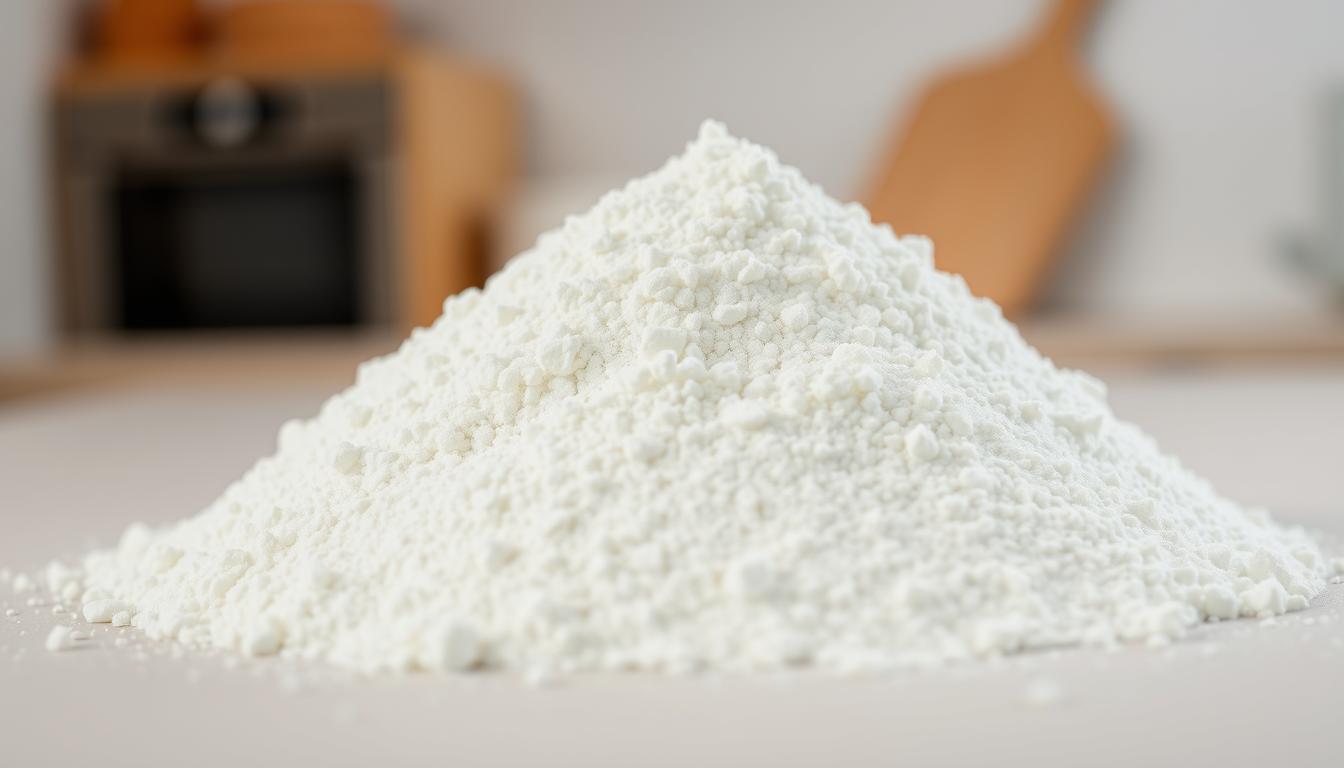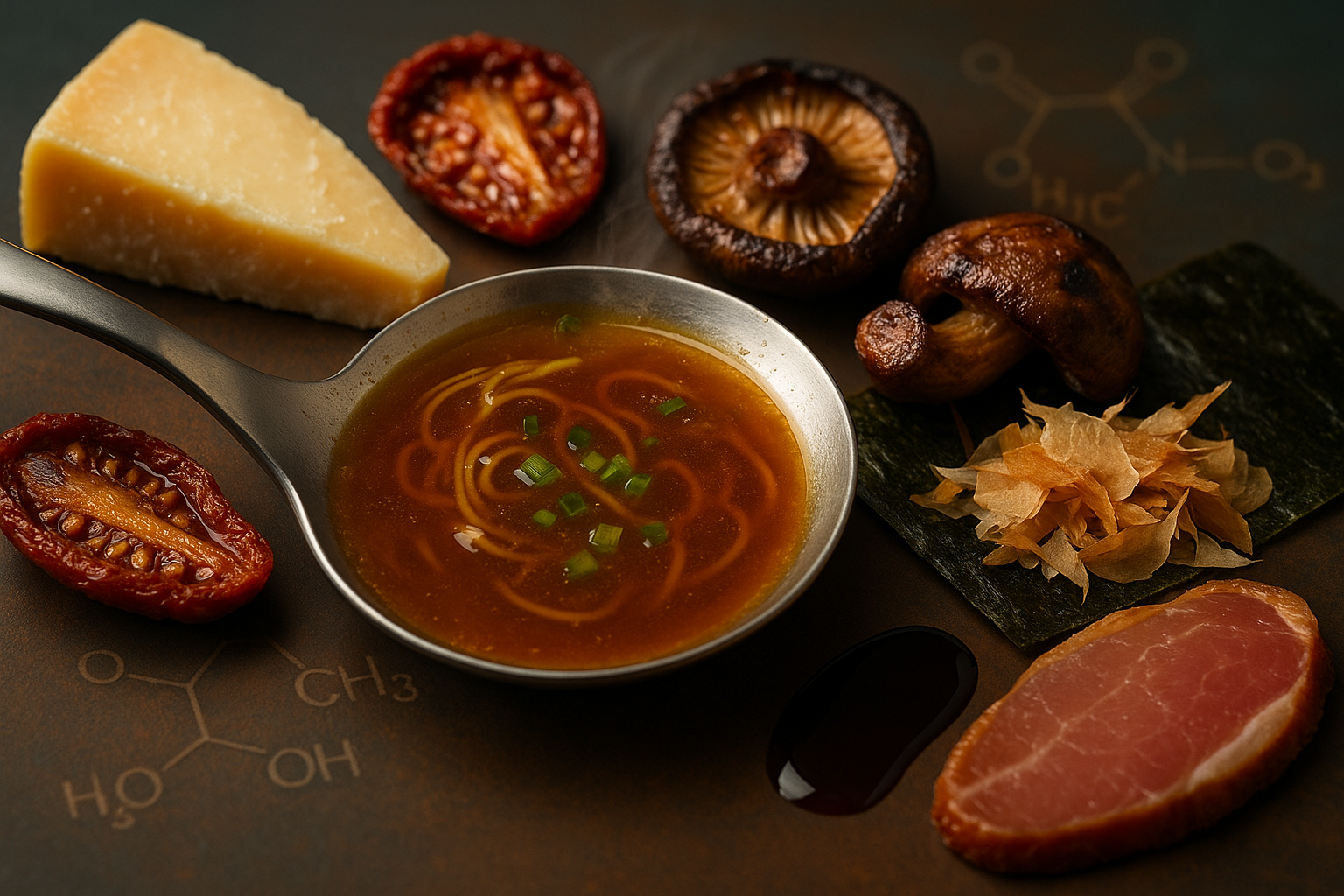
How to Improve Food Texture Using Hydrocolloids
SUBSCRIBE TO OUR BLOG
Promotions, new products, and recipes.
Food texture plays a vital role in the overall sensory experience of food. Achieving the right texture can make a dish more enjoyable and pleasurable to eat. This is where hydrocolloids come into play. Hydrocolloids are substances that can modify the viscosity and texture of food. They are used in a variety of food products to enhance texture, stability, and mouthfeel.
Key Takeaways
- Food texture is an important factor in the sensory perception of food.
- Hydrocolloids can be used to modify viscosity and improve stability in food products.
- Hydrocolloids can create desirable perceived textures in food products.
- Hydrocolloids are commonly used in a variety of food products to enhance texture, stability, and mouthfeel.
- Hydrocolloids present unique challenges that must be considered when using them for texture improvement in food products.
Understanding Food Texture and Its Importance
The way we perceive food texture is subjective and varies from person to person. For example, some individuals may prefer crunchy foods, while others enjoy soft and creamy textures. Therefore, food manufacturers need to understand the sensory preferences of consumers to produce foods that meet their expectations.
The importance of food texture is further highlighted by the fact that it influences our food choices and preferences. For example, many people find it challenging to consume foods with unfavorable textures, such as mushy or gummy foods. Additionally, texture plays a crucial role in specific food products, such as bakery items, dairy products, and confectionery products, where the texture is highly valued by consumers.
The Role of Hydrocolloids in Food Texture Enhancement
Hydrocolloids play a crucial role in improving food texture by modifying the viscosity and providing stability to food products. They also create desirable perceived textures such as creaminess, thickness, and smoothness. The use of hydrocolloids is, therefore, a common strategy employed by food manufacturers to enhance the quality and appeal of their products.
Hydrocolloids are long-chain polymers that have a high affinity for water molecules, allowing them to swell and form gels, which thickens the food product. They also interact with other food components such as proteins and fats, altering the texture and mouthfeel of the food.
The choice of hydrocolloid depends on the desired texture and the specific application. For example, xanthan gum is commonly used in salad dressings and sauces due to its ability to increase viscosity, while carrageenan finds application in dairy products because of its ability to form gels and stabilize emulsions. Other commonly used hydrocolloids include guar gum, pectin, and agar.
The addition of hydrocolloids to food products requires careful consideration of the product formulation and processing conditions. The concentration and type of hydrocolloid used can impact the product's sensory properties, such as taste, flavor, and color. Furthermore, hydrocolloids can interact with other ingredients in the product, affecting its texture and stability.
Overall, the use of hydrocolloids in food products provides a versatile and effective means of improving texture, offering numerous benefits to manufacturers and consumers alike. Through careful selection, formulation, and processing, hydrocolloids can help to create high-quality, desirable food products that meet the needs and preferences of consumers.
Different Types of Hydrocolloids and Their Effects on Texture
Hydrocolloids are widely used in the food industry to improve texture, taste, and appearance. They are used to create specific textural properties that make food more attractive to consumers. Depending on the type of hydrocolloid used, the desired textural characteristics can range from creaminess to firmness. Also, each hydrocolloid has unique chemical and physical properties that contribute to the final product’s mouthfeel and texture.
Common Hydrocolloids and Their Functions
The following are some of the most commonly used hydrocolloids in the food industry:
| Hydrocolloid | Function |
|---|---|
| Gelatin | Creates a smooth, creamy texture in desserts and dairy products |
| Agar | Provides a firm, brittle texture in gels and jellies |
| Carrageenan | Enhances viscosity and stability in dairy products and sauces |
| Xanthan gum | Improves mouthfeel and texture in dressings, sauces, and bakery products |
| Guar gum | Creates a creamy texture in dairy products and dressings |
Each hydrocolloid has specific physical and chemical properties that contribute to the desired texture. For example, gelatin has a unique ability to create a smooth, creamy texture in desserts and dairy products. Conversely, xanthan gum improves mouthfeel and texture in dressings, sauces, and bakery products.
The Role of Hydrocolloids in Mouthfeel and Physical Characteristics
Hydrocolloids play a crucial role in creating mouthfeel in food products. Mouthfeel is the sensory perception of the physical and chemical properties of food in the mouth. It is affected by various factors, including texture, viscosity, and rheology. Hydrocolloids help to create unique mouthfeel sensations, including smooth, creamy, chewy, or crisp.
Physical characteristics of food products are essential for consumers’ preferences. Hydrocolloids can improve the physical characteristics of food by increasing viscosity, adjusting texture, and providing stability. For example, in dairy products, hydrocolloids can improve mouthfeel, prevent milk proteins from aggregating, and stabilize the product during storage.
Overall, hydrocolloids play a vital role in improving food texture. They can create specific textural properties that make food more appealing to consumers. Understanding the types of hydrocolloids and their effects on mouthfeel and physical characteristics is crucial for developing food products that meet consumers’ expectations.
Texture Analysis Techniques for Evaluating Food Quality
Texture analysis is a critical component of evaluating food quality, impacting both sensory perception and consumer preference. This technique helps measure product texture objectively and consistently, providing valuable data for manufacturers to improve their formulations.
There are various texture analysis techniques commonly used in the food industry. One of the most popular is the compression test, which measures the force required to compress a food sample at a constant speed. Another technique is the shear test, which measures the force required to cut or break a sample.
Other methods used in texture analysis include puncture, extrusion, and bending tests, each designed to measure specific textural properties. These tests provide insight into the textural attributes of food products, such as hardness, cohesiveness, and adhesiveness.
Texture analysis techniques are crucial in assessing food quality, enabling manufacturers to make informed decisions about texture modifications and improvements. By utilizing these techniques, food companies can ensure consistent quality control and elevate their products' sensory experiences.
Applications of Hydrocolloids in Specific Food Products
Hydrocolloids are widely used in the food industry as additives to enhance the texture of various food products. These versatile ingredients have been successfully employed in a broad range of applications, from bakery goods to dairy products, and sauces to confectionery items.
Bakery Goods: In bakery goods, hydrocolloids can modify the dough's rheology, water-binding capacity, and viscoelastic properties. They are commonly used to improve the volume and quality of baked goods such as bread and cakes, preventing staling, and extending the shelf life of these products.
| Bakery Item | Hydrocolloids Used |
|---|---|
| Bread | Xanthan gum, Guar gum, Hydroxypropyl methylcellulose (HPMC) |
| Cakes | Carrageenan, Pectin, Agar |
Dairy Products: Hydrocolloids can be used to modify the texture and mouthfeel of dairy products and improve the stability of emulsions. They are used in ice cream to prevent the formation of ice crystals, impart smoothness and creaminess, and improve the overrun. They can also be used in cheese and yoghurt to modify texture and prevent syneresis.
| Dairy Product | Hydrocolloids Used |
|---|---|
| Ice cream | Carrageenan, Guar gum, Carboxymethyl cellulose (CMC) |
| Cheese | Alginate, Carrageenan, Xanthan gum |
| Yoghurt | Gellan gum, Pectin, Carrageenan |
Sauces: Hydrocolloids can be used to increase the viscosity of sauces, improving their mouthfeel, and preventing phase separation. In salad dressings, they can be used to prevent oil separation and improve the stability of emulsions.
| Sauce | Hydrocolloids Used |
|---|---|
| Ketchup | Guar gum, Xanthan gum, CMC |
| Mayonnaise | Xanthan gum, Guar gum, CMC |
| Salad dressing | Gellan gum, Alginate, Carrageenan |
Confectionery: Hydrocolloids can be used to modify the texture and mouthfeel of confectionery products. In gummies and jellies, they can be used to create the desired texture and to prevent stickiness and hardening.
| Confectionery | Hydrocolloids Used |
|---|---|
| Gummies | Agar, Pectin, Carrageenan |
| Chewing gum | Gellan gum, Xanthan gum, Carrageenan |
Hydrocolloids are essential components in the food industry, contributing significantly to the quality and texture of various food products. Their versatility and functionality make them an indispensable tool in the creation of novel culinary creations.
Sensory Perception and Consumer Preferences
Food texture significantly impacts sensory perception and influences consumer preferences when it comes to food choices. The textural experience of a food product can determine whether it is enjoyable or not, and whether it meets consumer expectations. Texture is one of the essential sensory attributes that a consumer evaluates when they taste food, together with flavor and appearance.
A study conducted by the University of Copenhagen found that texture was the second most important factor when it comes to consumer acceptance, with flavor being the most important. Sensory perception, including texture, plays a significant role in shaping consumers' attitudes and behavior towards food products. Taste, texture, and flavor are all critical aspects that influence the overall sensory experience of a food product.
Consumer preferences and sensory perception are closely linked when it comes to food products. Favorable texture can lead to a more enjoyable eating experience, while unfavorable texture can lead to disappointment and dissatisfaction. Therefore, understanding the importance of texture and consumer preferences is crucial when developing new food products.
Challenges and Considerations in Using Hydrocolloids for Texture Improvement
While hydrocolloids offer a promising solution for improving food texture, there are several challenges and considerations that must be taken into account when using these ingredients.
Firstly, the selection of the appropriate hydrocolloid for a particular application can be a complex process. The ideal hydrocolloid must consider the desired textural attributes, the processing conditions, and the compatibility with other ingredients in the formulation.
Additionally, the addition of hydrocolloids can affect the sensory properties of the finished product, such as taste and aroma. Careful formulation and testing are necessary to ensure that the final product meets the desired sensory and texture characteristics.
Furthermore, the amount and method of hydrocolloid addition must be carefully considered. Overuse of hydrocolloids can result in an undesired thick or gummy texture, while underuse may not achieve the desired textural effect.
Finally, it is important to note that hydrocolloids are not a universal solution for achieving optimal food texture. Certain food products may require alternative approaches or a combination of hydrocolloids with other texturizers to obtain the desired texture.
In conclusion, while the use of hydrocolloids can be an effective way to improve food texture, it is important to carefully consider and address the formulation challenges and sensory impacts that arise to achieve the optimum result.
Innovations in Texture Enhancement Techniques
The food industry is constantly evolving, and with it comes innovative ways to enhance texture. New technologies and research have enabled the creation of novel texture enhancement techniques that go beyond traditional hydrocolloid use. These innovations have provided solutions to some of the formulation issues and sensory changes associated with hydrocolloids.
3D Printing
3D printing is one technique that has gained attention in recent years. This technology allows for the creation of custom shapes and textures using hydrocolloids. By designing and printing molds, it is possible to create unique structures that provide new eating experiences. The use of 3D printing also allows for the incorporation of multiple flavors and textures in a single product, further enhancing the sensory experience for consumers.
High-Pressure Processing (HPP)
High-pressure processing is another innovative technique used to alter the texture of food. HPP involves applying high pressure to food products, which can change the physical structure of the product. This technique has been used to improve the texture of meat products, making them more tender and juicy. HPP has also been used to develop new products, such as foams and gels, that have unique textures and mouthfeel.
Ultrasound Technology
Ultrasound technology is a relatively new technique used to modify the texture of food. It involves the application of high-frequency sound waves to food, which can alter the structure of the product at a microscopic level. This technique has been used to create new textures in products such as cheese and yogurt, as well as to improve the texture of meat products.
Nanotechnology
Nanotechnology is another emerging area in texture enhancement. This technology involves manipulating materials at the nanoscale level, which can lead to the development of new textures and structures in food products. Nanotechnology has been used to improve the texture of products such as chocolate and ice cream, creating smoother textures and better mouthfeel.
As the food industry continues to evolve, it is likely that new techniques and technologies will emerge to further enhance texture in food products. By staying up to date with the latest developments in texture enhancement, food manufacturers can create new products that provide unique and satisfying sensory experiences for consumers.
Conclusion
In conclusion, the use of hydrocolloids for improving food texture is an essential tool in the culinary world. Hydrocolloids provide numerous benefits, including modifying viscosity, improving stability, and creating desirable perceived textures. Understanding the significance of food texture and its sensory perception is vital in creating high-quality food products that meet consumer preferences. Texture analysis techniques are essential tools used to evaluate the textural attributes of different food products. The diverse applications of hydrocolloids in specific food products showcase how these ingredients can be used to enhance texture in various culinary creations.
However, the challenges and considerations when using hydrocolloids for texture improvement should not be ignored. Formulation issues and potential sensory changes must be taken into account when considering the use of hydrocolloids in food products. Recent innovations in texture enhancement techniques have led to emerging technologies and research advancements in the field. Therefore, continued research and development are necessary to improve the texture enhancement techniques further. In summary, the importance of food texture cannot be underestimated, and hydrocolloids play a crucial role in enhancing food texture. The use of hydrocolloids must be balanced with the challenges and considerations that arise when using them. By understanding the impact of texture on overall eating experiences and consumer choices, culinary professionals can continue to improve their products' food texture and elevate the overall dining experience for their customers.
FAQ
How can hydrocolloids improve food texture?
Hydrocolloids have the ability to modify viscosity, enhance stability, and create desirable perceived textures, which can improve overall food texture.
Why is food texture important?
Food texture plays a crucial role in sensory evaluation and perception. It affects how we experience food and influences our preferences and satisfaction.
What factors contribute to sensory perception of texture?
Sensory perception of food texture is influenced by various factors including sensory evaluation methods and the textural properties of the food itself.
What are the different types of hydrocolloids used in texture enhancement?
Common types of hydrocolloids used to improve food texture include gums, pectin, carrageenan, and agar. Each has its own effects on mouthfeel and physical characteristics.
How can texture analysis techniques evaluate food quality?
Texture analysis techniques measure the physical properties of food, providing valuable insights into its quality, consistency, and mouthfeel.
In what food products can hydrocolloids be used to enhance texture?
Hydrocolloids have a wide range of applications in various food products such as dairy products, baked goods, sauces, and dressings.
How does sensory perception affect consumer preferences?
Sensory perception, including food texture, plays a significant role in consumer preferences. Texture impacts overall eating experiences and influences consumer choices.
What are the challenges in using hydrocolloids for texture improvement?
Challenges in using hydrocolloids for texture improvement include formulation issues, potential sensory changes, and the need to find the right balance in texture modification.
What innovations are there in texture enhancement techniques?
Recent innovations in texture enhancement techniques include the use of novel hydrocolloids, advanced processing methods, and technologies to create unique textural experiences.
What is the key takeaway about improving food texture with hydrocolloids?
Using hydrocolloids to improve food texture can elevate culinary experiences, enhance sensory perception, and allow for greater creativity in food product development.
We recommend reading: Understing the Brix Effect on Hydrocolloids

About the Editor
About the Chef Edmund: Chef Edmund is the Founder of Cape Crystal Brands and EnvironMolds. He is the author of several non-fiction “How-to” books, past publisher of the ArtMolds Journal Magazine and six cookbooks available for download on this site. He lives and breathes his food blogs as both writer and editor. You can follow him on Twitter and Linkedin.


|
About the Author Ed is the founder of Cape Crystal Brands, editor of the Beginner’s Guide to Hydrocolloids, and a passionate advocate for making food science accessible to all. Discover premium ingredients, expert resources, and free formulation tools at capecrystalbrands.com/tools. — Ed |
Enjoyed this post? Subscribe to The Crystal Scoop
Food-science tips, ingredient know-how, and recipes. No spam—unsubscribe anytime.
- Choosing a selection results in a full page refresh.



